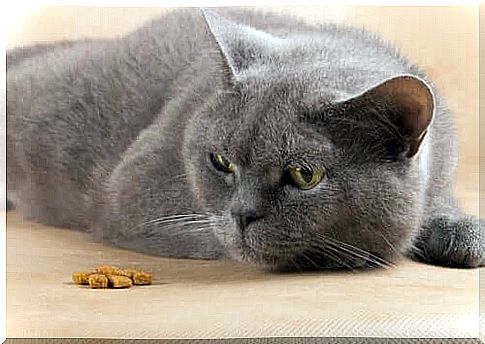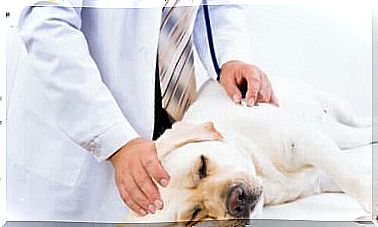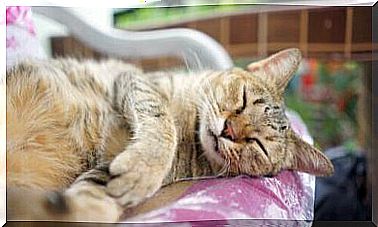Dysentery In Cats: Causes And Symptoms

Dysentery in cats and other animals is characterized by liquid or semi-liquid stools accompanied by blood. Learn more about the topic below.
Dysentery in cats may not be easy to detect.
One of the most common problems in cats is diarrhea and gastrointestinal discomfort. Even so, depending on your cat’s lifestyle, you may not be aware of your cat’s bowel habits.
Most cats defecate once a day. In case of normal deposition, the odor should not be too strong and its consistency should allow the faeces to be handled easily.
However, blood in a cat’s stool can be difficult to identify. If blood originates in the lower intestinal tract, particularly the distal colon – the large intestine – or the rectal region, fresh blood is more likely to appear.
How can you detect it? Often red or pink drops or spots are discovered on the sides of the litter box and on top of the stool.
On the other hand, if the bleeding originates in the upper part of the intestinal tract, particularly the small intestine, it will be black or brown. This color change is due to the partial digestion of blood by enzymes secreted in the small intestine. This blood usually appears as dark or coffee bean-like spots.
It’s important to keep in mind that constipation and diarrhea can cause blood in cats’ feces. Bright red blood without diarrhea or hard, dry stools usually indicates the problem is closer to the rectum and anus.

What are the causes of dysentery in cats?
This would be an exhaustively long list if we went into everything that can cause dysentery in cats, but these are some of the main causes:
- Parasites.
- Viral or bacterial infections.
- Food indiscretion or sudden change in diet.
- Stress : Stress, anxiety or excitement can cause colitis.
- Primary inflammatory disorders.
- Metabolic Diseases : From pancreatic or liver disorders to thyroid imbalances, there are many other problems that alter the motility or environment of the gastrointestinal tract and can cause bloody diarrhea.
- Medications or Toxins : Little is known about the fact that certain medications, including some antibiotics, can alter the gastrointestinal tract, as can certain toxins.
How to act on this problem?
As there are many potential causes of dysentery in cats, it is important to see your veterinarian regularly. It is obvious that many of the causes of diarrhea need specific treatment. In case of dysentery, you should always consult your veterinarian.
At home, the main thing is to keep hydrated. It is very important to avoid dehydration and electrolyte imbalance.

Associated symptoms
In general, if your cat has slightly soft stools but is still happy, playful, and eating normally, you can probably wait to see what your pussy’s next bowel movement looks like. Some reasons for alarm are:
- Loss of appetite.
- Lethargy or depression.
- Pain or discomfort.
What should you do if you notice blood in your cat’s feces?
In the event of any change in your cat’s bowel movements, inform your veterinarian immediately. Remember that loose stools in the morning can cause dehydrating diarrhea at night.
Blood in the stool, red or black, is always a concern. Digested dark blood can indicate a serious condition, while red blood can be anything from benign changes caused by food to cancer.
In summary, if you notice something strange in your cat’s feces, don’t delay in seeking veterinary help. Don’t wait for the problem to resolve itself. The best advice is to keep watching your cat’s litter box to act in time.








